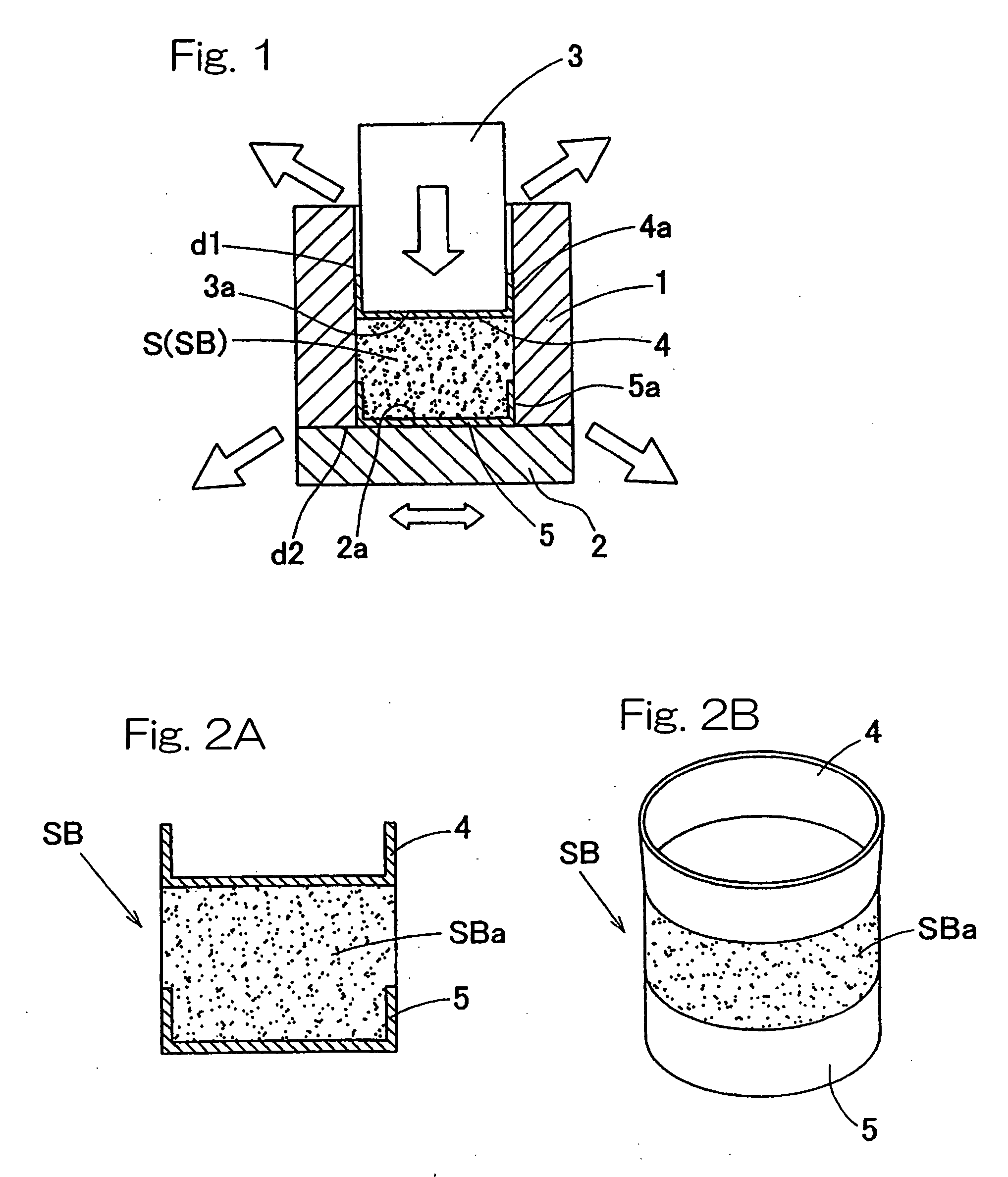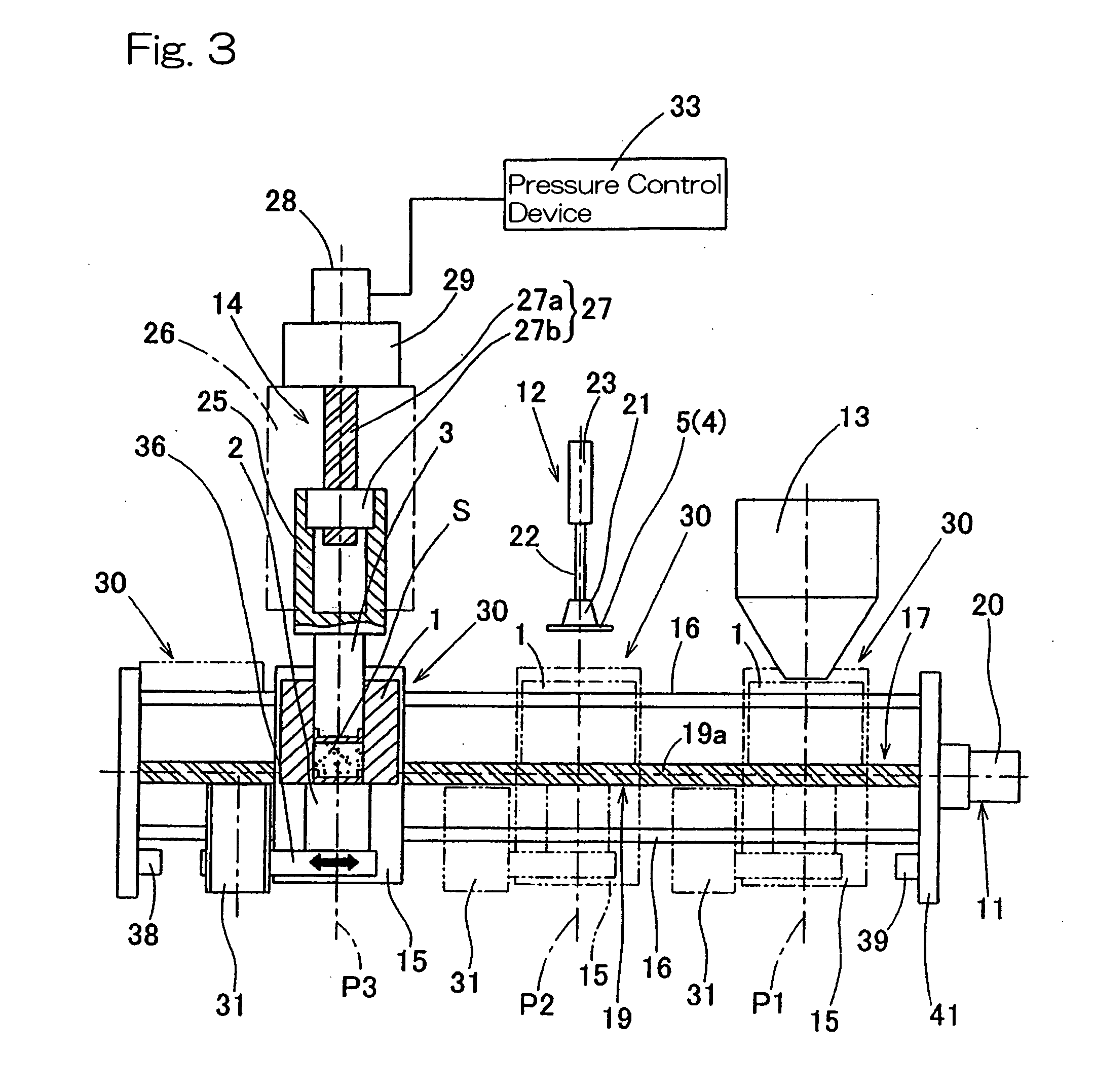Solid-liquid separating method,solid-liquid separator and solidified product
a solid-liquid separation and separation method technology, applied in separation processes, filtration separation, moving filter elements, etc., can solve the problems of insufficient recycling of sludge concentrated as a result of solid-liquid separation, inability to recycle sludge, and inability of known sludge solidification apparatus to work with such sludge. to achieve the effect of convenient recycling
- Summary
- Abstract
- Description
- Claims
- Application Information
AI Technical Summary
Benefits of technology
Problems solved by technology
Method used
Image
Examples
first embodiment
[0121]FIG. 10 is a fragmentary longitudinal sectional view of a portion of the solid-liquid separating apparatus according to another preferred embodiment of the present invention, showing the relation between a nozzle head, which forms means for injecting a liquid bonding agent, and the mold unit 1. The solid-liquid separating apparatus according to the embodiment shown in FIG. 10 is substantially similar to that described hereinbefore in connection with the first embodiment, but is additionally provided with means for and a process step of injecting a bonding agent or a hardening agent.
[0122] As is well known to those skilled in the art, it often occurs that depending on the material constituting the slurry S, the slurry S would not be solidified merely by means of the compressing process. If such a slurry S is desired to be solidified, injection of the bonding agent A or the hardening agent into the compressed solid body within the mold unit 1, which has already been compressed i...
second embodiment
[0125] According to the present invention described above, after the slurry S has been compressed within the mold unit 1 by means of the press machine 14 in the manner described hereinbefore, the pressing rod 3 is retracted out of the mold unit 1 and the injection nozzle head 45, shown in FIG. 10, is inserted into the mold unit 1 at the additional indexed position for injection to thereby inject the bonding agent A or the hardening agent.
[0126] Where the bonding agent A or the hardening agent is injected into the mold unit 1 after the slurry S within the mold unit 1 has been compressed, unlike the case in which the bonding agent or the hardening agent is injected at a stage before the slurry is compressed, the liquid components squeezed out from the slurry S as a result of the compression does not mix in the bonding agent or the hardening agent and, therefore, the liquid components as squeezed out from the slurry can be recovered. Also, since after the slurry S within the mold unit ...
PUM
| Property | Measurement | Unit |
|---|---|---|
| particle size | aaaaa | aaaaa |
| diameter | aaaaa | aaaaa |
| pressure | aaaaa | aaaaa |
Abstract
Description
Claims
Application Information
 Login to View More
Login to View More - R&D
- Intellectual Property
- Life Sciences
- Materials
- Tech Scout
- Unparalleled Data Quality
- Higher Quality Content
- 60% Fewer Hallucinations
Browse by: Latest US Patents, China's latest patents, Technical Efficacy Thesaurus, Application Domain, Technology Topic, Popular Technical Reports.
© 2025 PatSnap. All rights reserved.Legal|Privacy policy|Modern Slavery Act Transparency Statement|Sitemap|About US| Contact US: help@patsnap.com



